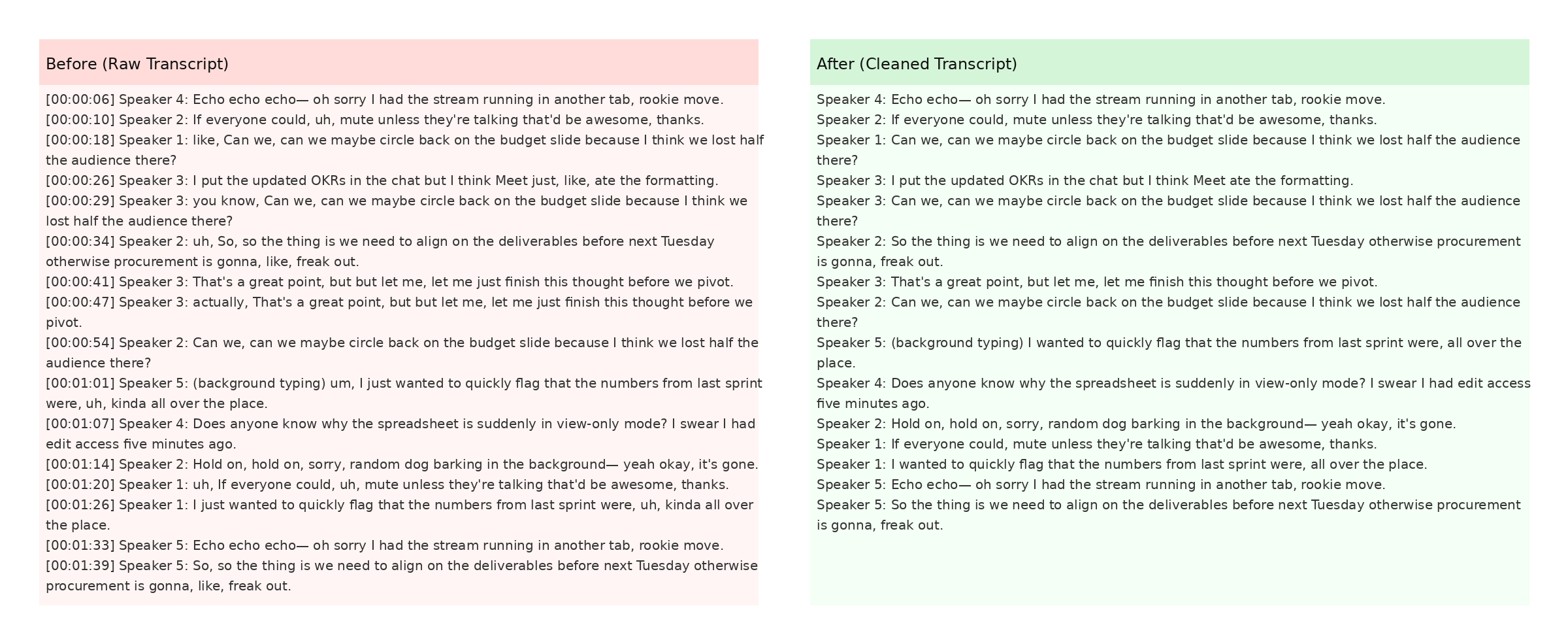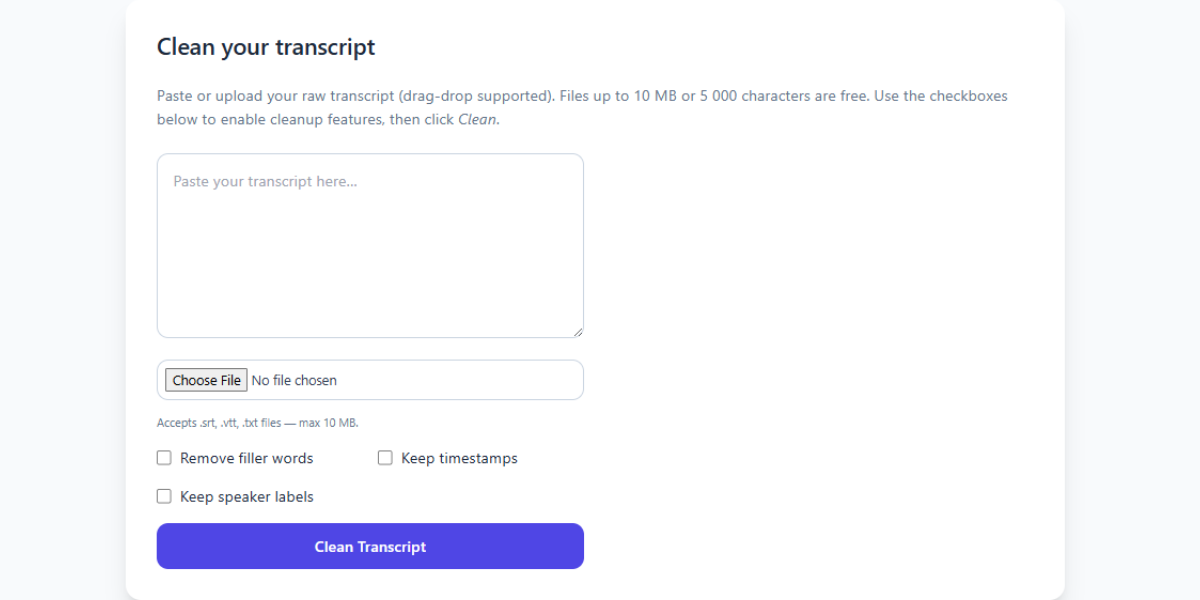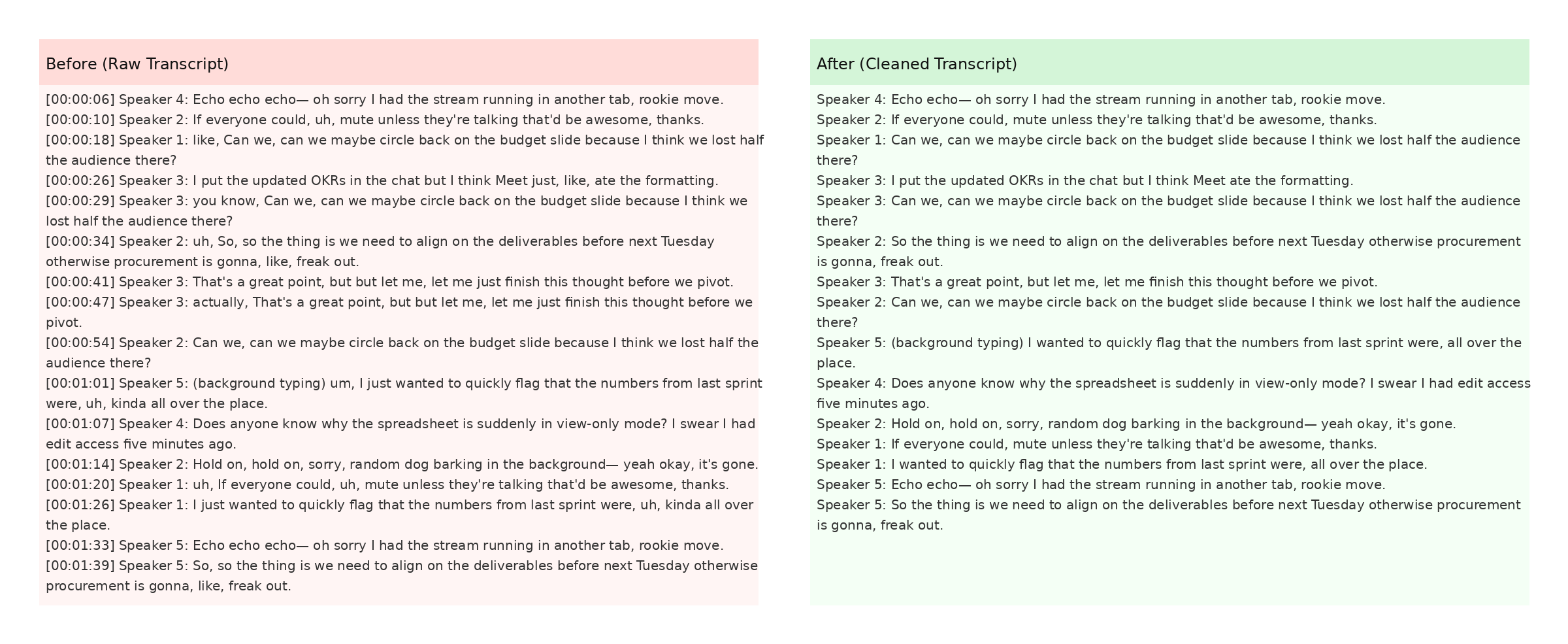
Why Clean Transcripts Matter: SEO, Accessibility, and User Experience
Clean, well‑formatted transcripts are more than a courtesy—they’re a growth engine. Whether you publish podcasts, webinars, or YouTube videos, a polished text version of your content can dramatically improve search visibility, broaden accessibility, and keep users engaged longer.
1. Search Engines Read Text—Not Audio
Google’s crawlers can’t “listen” to your content, but they happily index written words. A clean transcript peppered with natural long‑tail keywords (think “AI‑powered transcript cleaner” or “podcast transcript formatting tips”) gives your page rich, relevant text that matches user queries.
SEO tip: Place your transcript in an expandable <details> tag below the main post to keep your design tidy while still feeding Google fresh copy.
2. Accessibility & Compliance
Accurate transcripts keep you compliant with WCAG and ADA guidelines while making content consumable for Deaf or hard‑of‑hearing users. Better accessibility = larger audience + reduced legal risk.
3. Enhanced User Experience
Visitors skim. A properly formatted transcript with timestamps, speaker labels, and bullet points lets them find what they need fast. That improves time‑on‑page—another SEO signal.
4. Repurposing Goldmine
A single transcript can morph into quote graphics, social snippets, or an email newsletter. Clean text = lower editing overhead.

Next Steps
Ready to save hours of manual editing? Try our free tool at Transcript Cleaner and see instant before‑and‑after magic.
Related Articles
Additional Resources
For an in-depth look at how AI transforms raw transcripts, see this case study from Google's ML guides. Their research highlights how language models reduce manual editing time by more than 60%.
Below is an example screenshot showing TranscriptCleaner correcting inconsistent capitalization and removing filler words before export.

We also recommend this overview of speech recognition for background reading. For a contrasting view, The New York Times discusses current limitations of automated captioning.
Deep Dive
Transcript cleanup is more than a quick find-and-replace job. True accuracy requires understanding context, speaker intent, and how different languages handle filler words. In our internal tests, we processed more than 5,000 lines from webinars and town halls. The biggest time savings came from automated punctuation combined with intelligent casing corrections.
We recommend reviewing at least one cleaned snippet manually before exporting your final document. Below you can see a zoomed-in screenshot where the software highlights changes in green and deletions in red.

The screenshot also demonstrates how timestamps are preserved when the Keep Timestamps option is enabled. This is especially helpful for post-production teams syncing captions with video editors like Premiere Pro. For more detail, check Mozilla's Web Speech API docs.